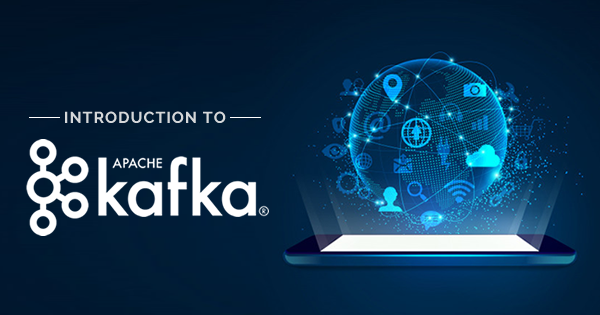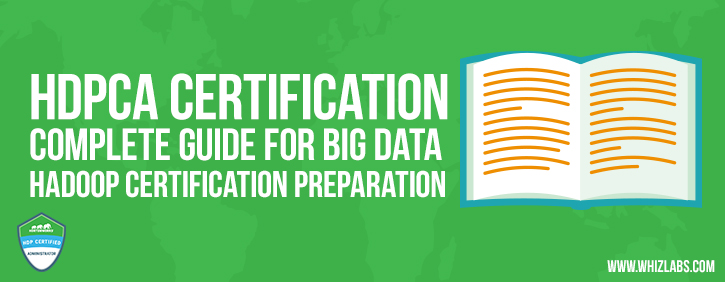Kafka is one of the important technologies that have gained widespread attention in recent times. The demand for Apache Kafka tutorial courses shows the exceptional popularity enjoyed by it. Presently, we can notice the exceptional rise in the adoption of Big Data across multiple sectors. Therefore, enterprises have to deal constantly with the rising volume of data, which subsequently leads to two prominent issues.
One of the formidable challenges refers to the collection of massive volumes of data, while another challenge refers to the analysis of collected data. In such cases, a messaging system serves as the ideal solution. Apache Kafka is a distributed messaging system that works exceptionally well in comparison to the conventional message broker.
Enroll Now: Apache Kafka Fundamentals Training Course
With the rising adoption of Apache Kafka across different notable platforms such as Netflix, Uber, and others, the curiosity around Apache Kafka fundamentals is increasing considerably.
The following discussion will serve an introductory Apache Kafka tutorial with highlights regarding the basic architecture and working of Kafka. Readers can use the following discussion to obtain information regarding the definition of Apache Kafka, its benefits, and the basic components such as Zookeeper.
What is Apache Kafka?
The foremost thing that you will find in an Apache Kafka tutorial would be the answer to ‘what is Kafka”. The basic definition of Kafka indicates that it is a messaging system designed for higher durability, scalability, and speed. The open-source stream processing platform developed at LinkedIn and subsequently became an open-source Apache project in 2011.
Written in Java and Scala, Apache Kafka helps in providing a reliable platform for the management of real-time data feeds with higher throughput and lower latency. According to Apache, Kafka serves as a distributed streaming platform that allows users to carry our different functionalities. Reflection on Apache Kafka fundamentals can show how it helps in performing the following functions.
- Publishing and subscription to streams of records.
- Storage of streams of records with higher fault tolerance.
- Processing of streams of records as they develop.
Significance of Apache Kafka
So, what is the importance of Apache Kafka? An in-depth reflection on the use of a messaging system can showcase the significance of Apache Kafka thoroughly. Basically, a messaging system is ideal for transferring data between applications so that applications could emphasize on data rather than attending to the concerns of sharing. Apache Kafka basic information clearly shows that it follows a publishing-subscribing model messaging system.
A clear understanding of the publish-subscribe model is an essential factor in understanding Apache Kafka. Users should note that messages persist according to a particular topic in the publish-subscribe model of Apache Kafka. The producers of a message are publishers, while receivers or message consumers are the subscribers in the publish-subscribe model of Kafka. Consumers could choose to subscribe to one or more topics and consume all messages related to a particular topic.
Also Read: Real-time Big Data Pipeline with Hadoop, Spark, and Kafka
Advantages of Apache Kafka
The importance of Kafka is one of the foremost highlights in any Apache Kafka tutorial. Readers should know that Kafka is tailored for the collection and analysis of large volumes of data. The functionalities of Apache Kafka as a reliable messaging system improve the use of big data in accordance with the requirements of businesses.
Kafka helps in the creation of real-time streaming pipelines for the transfer of data between systems and applications. In addition, Kafka also supports the development of real-time streaming applications for reacting to a data stream. Kafka basic information can help you know the benefits of Kafka that help in establishing its popularity. Here are the four major benefits of Kafka that are responsible for its widespread application.
- First of all, Kafka is distributed, replicated, fault-tolerant, and partitioned. It can replicate data alongside supporting multiple subscribers and ensuring the automatic balancing of consumers in case of failure.
- Kafka’s distributed structure helps in faster and easier scalability without any concerns for incurring downtime
- Users can also get the assurance of durability with Apache Kafka due to the use of a distributed commit log. Basic Apache Kafka tutorial shows that messages can persist on disk as soon as possible with Kafka. In addition, the facility of intra-cluster replication improves the durability of Apache Kafka.
- Apache Kafka shows higher potential in terms of throughput for the publisher as well as subscriber messages. The stability of Kafka’s performance, irrespective of dealing with multiple terabytes of stored messages, is also a promising factor for increasing its popularity.
Use Cases of Apache Kafka
Another important aspect of an Apache Kafka tutorial refers to the use of cases for Kafka. The major use cases of Kafka are visible in metrics, stream processing, and log aggregation solutions. If you are trying to find out “how does Kafka work?” then you can find the use cases helpful. The use cases show the specific applications of Apache Kafka and the particular functionalities of Kafka in each case.
In the case of metrics, Kafka finds applications in operational monitoring data. With such applications, Kafka aggregates statistics from distributed applications for producing centralized feeds of operational data.
The use of Kafka as a log aggregation solution involves the collection of logs from different services and ensuring their availability in standard formats for multiple consumers.
One of the most notable aspects of Apache Kafka is its widespread application in stream processing. Stream processing involves reading data from a concerned topic, processing it, and writing the processed data to new topics with higher availability for users and applications. The strong durability features of Kafka help considerably in the case of stream processing.
Apache Kafka is among the top real-time data streaming tools. Here is the full list of Top Real-time Data Streaming Tools.
The Architecture of Apache Kafka
The most important tool for understanding Apache Kafka is its architecture. Reflecting on the architecture can help you find the answer to “how does Kafka work?” and establish the functionalities of different features of Kafka. The first detail in the working of Kafka clearly states that it runs as a cluster on one or multiple servers spread across multiple data centers. The Kafka cluster ensures the storage of streams of records in different categories, also known as topics.
Every record on Kafka has a key, a timestamp, and a value. The discussion on Apache Kafka architecture can expand further with a reflection on the core APIs in Kafka. The core APIs in Apache Kafka include the Producer API, Consumer API, Connector API, and Streams API. Every API has individual functionalities and significance in ensuring the working of Apache Kafka. Let us find out the capabilities of each API below.
-
Producer API
The Producer API can help applications in publishing a stream of records to one or multiple Kafka topics.
-
Consumer API
The Consumer API could help applications in subscribing to topics and ensure processing of the stream of records shown to them.
-
Connector API
The Connector API is also a common addition in every Apache Kafka tutorial. It helps in building and running reusable producers and consumers, which connect the Kafka topics to existing data systems and applications. For instance, connectors to a relational database could help in capturing every change to a table.
-
Streams API
The Streams API help applications in working as a stream processor. Streams API helps in the consumption of input stream from one or multiple topics and production of output stream to one or multiple output topics. Therefore, the Streams API is highly crucial for reliable conversion of input streams into output streams on Kafka.
One of the important highlights of Kafka architecture is that the communication between servers and clients happens through simple, language-independent, and high-performance TCP protocol. The versioning of the protocol and backward compatibility with the older version provides promising functionalities. Users could avail of the Java client for Kafka, although there are many other languages in which Kafka client is available.
Zookeeper in Apache Kafka
Another common question that troubles many people about Apache Kafka is, ‘what is zookeeper.’ First of all, you should note that Kafka brokers are simple, stateless systems for the maintenance of published data. The use of Zookeeper is visible in the management and coordination of Kafka brokers. Generally, you can come across the question of ‘what is zookeeper’ in interview questions.
The applications of Zookeeper in Kafka primarily refer to providing notification to producers and consumers regarding the presence of a new Kafka broker in the system or failure of existing Kafka broker. Producers and consumers get notifications about the addition or failure of a Kafka broker and could take relevant decisions. As a result, both the producer and consumer could easily make decisions regarding the coordination of tasks with another broker.
Preparing for a Big Data interview? Go through these top Big Data interview questions and get ready to ace the interview.
Are You Ready to Learn about Apache Kafka?
An observation of the different functionalities and architecture of Apache Kafka shows many interesting aspects of Kafka. The rising adoption of Kafka is driving the creation of new career opportunities, and following an Apache Kafka tutorial can be a good start! As the combination of messaging, stream processing, and storage capability, Apache Kafka is undoubtedly a powerful ingredient for streaming platforms.
As compared to conventional enterprise messaging systems, Apache Kafka offers a combination of low-latency and storage, so that streaming applications could treat data from past and future in the same way. With the rising emphasis on the importance of event-driven architecture, Apache Kafka can serve promising inputs with a single real-time event broadcasting platform alongside durable storage.
If you want to learn more about Apache Kafka, we recommend you enroll in the Apache Kafka Fundamentals Training Course and explore more information about the Apache Kafka!
- Top 45 Fresher Java Interview Questions - March 9, 2023
- 25 Free Practice Questions – GCP Certified Professional Cloud Architect - December 3, 2021
- 30 Free Questions – Google Cloud Certified Digital Leader Certification Exam - November 24, 2021
- 4 Types of Google Cloud Support Options for You - November 23, 2021
- APACHE STORM (2.2.0) – A Complete Guide - November 22, 2021
- Data Mining Vs Big Data – Find out the Best Differences - November 18, 2021
- Understanding MapReduce in Hadoop – Know how to get started - November 15, 2021
- What is Data Visualization? - October 22, 2021


Pls let me know more detail as I request to share graphical representation architecture